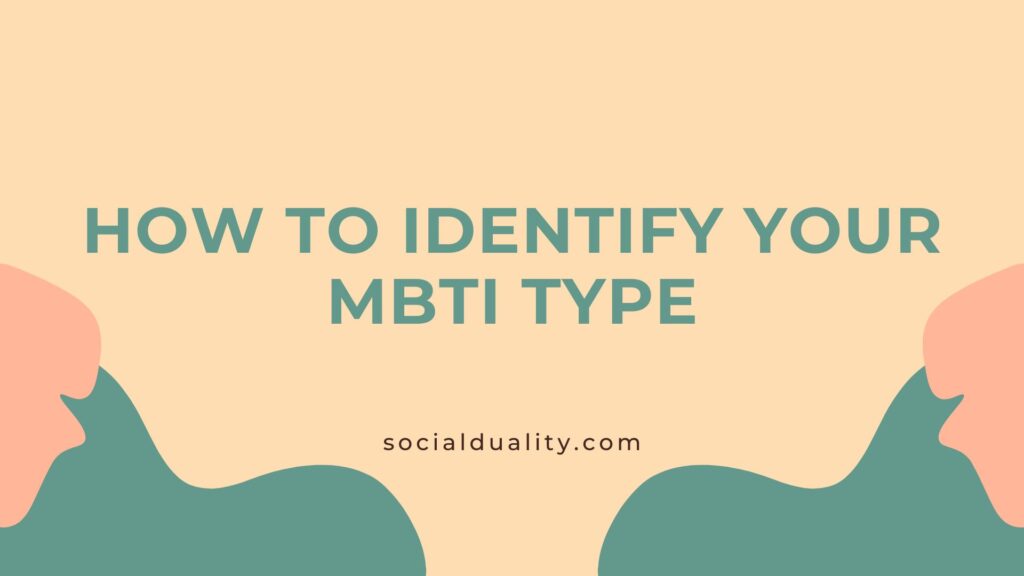Understanding MBTI preferences involves delving into the contrasting traits of introversion and extroversion. The INTP and INFP types both lean towards introversion but diverge in their approaches. INTPs often appear detached, focusing on abstract systems, while INFPs place emphasis on emotional experience.
This distinction is clear in the INTP function stack, where introverted thinking (Ti) reigns supreme, guiding logical analysis. In contrast, INFP understanding revolves around introverted feeling (Fi), highlighting emotional and value-driven decisions.
When considering the dominant and inferior functions, INFP similarities include valuing personal authenticity, akin to INTPs’ quest for objective truths. This balance between feeling and thinking highlights the unique judging function in MBTI, which showcases how decisions are shaped. Exploring the introverted judging function deepens one’s grasp of self-assessment, enabling personal growth.
The user comments on MBTI topics often reflect on how people identify with their results. These insights help in interpreting the core elements.
Introversion vs. Extroversion: Key Differences
Differences between introverts and extroverts reveal fascinating insights into personality traits and MBTI. INTPs and INFPs lean towards introversion, but their cognitive processes differ. Introverted thinking (Ti) in INTPs focuses on logic, while INFPs harness introverted feeling (Fi) to navigate emotions. When it comes to sensing and intuition, both personalities rely on intuition, yet their applications vary. INTPs draw upon internal logic, whereas INFPs align more with personal values.
- Preferences: Introverts often favor solitude, while extroverts thrive in social settings.
- Energy Source: Introverts recharge alone; extroverts gain energy from others.
- Communication: Introverts may prefer writing; extroverts might enjoy speaking.
- Focus: Introverts delve deep into ideas; extroverts explore varied interests.
- Decision Making: Introverts think before acting; extroverts might act spontaneously.
- Social Interaction: Introverts favor one-on-one interactions; extroverts love group activities.
- Function Stack: Introverts may lean on dominant function internally; extroverts project it externally.
Understanding these differences can help identify your MBTI type and navigate personal growth.
Sensing vs. Intuition: How They Shape You
The way sensing and intuition influence personality stems from how they interact with the world. They create paths for understanding new ideas and patterns. For those exploring their MBTI type, recognizing if they lean towards sensing or intuition is crucial. Sensing types focus on details and practicalities, while intuitive folks see the big picture.
This difference can shape how one processes information or makes decisions.
To identify your MBTI type, it’s key to reflect on whether you’re more detail-oriented or abstract-thinking. This insight can be a stepping stone to MBTI self-discovery. It’s like figuring out if you prefer a compass or a map on a journey. Understanding your preferences helps interpret MBTI results and profiles. This journey might not be obvious at first, but it offers insights into your personality traits and dominant and inferior functions.
| MBTI Aspect | Sensing Preference | Intuition Preference | Related Keywords |
|---|---|---|---|
| Information Focus | Concrete details | Big picture | MBTI personality insights |
| Approach | Practical and realistic | Imaginative and future-oriented | MBTI self-discovery |
| Decision Style | Based on current realities | Based on possibilities | Understanding MBTI profiles |
| Strength | Attention to detail | Seeing patterns | MBTI personality assessment |
| Challenge | Overwhelmed by too much data | Missing important details | Determine your MBTI type |
Thinking vs. Feeling: Emotional Processing
Exploring how emotions are processed, people often grapple with the balance between thinking and feeling. When you try to identify your MBTI type, this balance is key. INTPs lean heavily on logical thinking, while INFPs prioritize feelings. This difference is the backbone of their emotional processing.
- Identify your MBTI type: Reflect on whether logic or emotion guides you.
- Understanding your MBTI preferences: Are you more analytical or empathetic?
- MBTI personality insights: How do these traits impact your relationships?
- Interpreting MBTI results: What does your emotional style say about you?
- Understanding MBTI profiles: Dive into how your type processes feelings.
- Things MBTI: Recognize how your dominant function influences decisions.
- Function stack: Consider how your inferior function affects emotional response.
Discovering where you stand can guide personal growth and improve interactions.
Judging vs. Perceiving: Decision-Makers
Balancing openness and structure is key for decision-makers. INTPs, with their perceptive nature, crave flexibility. They chase after logical truths, always questioning and exploring. Think of them as detectives, sniffing out the truth.
Their inferior function, though, sometimes gets them tangled in emotions. On the flip side, INFPs cherish personal authenticity and emotional integrity, often wearing their hearts on their sleeves. They navigate life like artists, painting with their feelings. The way they use their function stack reflects their need for harmony and personal values.
While both are perceivers, their paths diverge in how they approach decisions and life’s challenges. Comments from INTPs often seem analytical, while INFPs sprinkle theirs with empathy. Understanding your own style can be enlightening. Are you more of a logical thinker or a feeling-driven creator? This could reveal a lot about how you interact with the world.
Steps to Determine Your MBTI Type
Identifying your MBTI type involves a series of steps that can be both enlightening and fun. Start with a MBTI type quiz. This quiz will ask questions about your preferences in various situations. Do you lean towards logic or emotion? Are you more structured or spontaneous? Next, think about your traits. Do you prefer facts or ideas? This self-assessment can help narrow your type.
Once you’ve got your results, it’s time to interpret them. An INTP might focus on logical analysis, while an INFP might prioritize emotional depth. These insights can help in understanding your dominant and inferior traits. They can also guide your personal growth and relationships.
Finally, check what others say. Read comments from others with the same type. This can provide additional insights into your MBTI profile. Understanding these indicators can be a profound journey of self-discovery.
Taking an MBTI Type Quiz: What to Expect
When you’re diving into discovering your MBTI type, expect a journey through intriguing questions. These questions will help you identify your MBTI type by exploring how you process information and make decisions. They delve into whether you lean towards thinking or feeling, sensing or intuition, introversion or extroversion, and judging or perceiving.
Reflect on moments when you navigated logic versus emotion or embraced structure over spontaneity. These insights aid in finding your MBTI personality. They also highlight your dominant and inferior traits.
Interpreting your MBTI results unveils your cognitive preferences, providing a clearer understanding of yourself.
Engage with comments from others sharing your type for further insights. Understanding your MBTI profile can be a fascinating adventure that enhances self-awareness.
| Aspect | Description | Importance Level | Insights Gained |
|---|---|---|---|
| Information Processing | Sensing Vs. Intuition | High | Cognitive Preferences |
| Decision-Maker’s Style | Thinking Vs. Feeling | Medium | Judging or Perceiving |
| Interaction Style | Introversion Vs. Extroversion | High | Understanding MBTI Preferences |
| Reflective Practices | Self-Assessment Techniques | Medium | Personality Traits and MBTI |
| Result Interpretation | Dominant and Inferior Function Insights | High | Emotional Processing |
Self-Assessment Techniques: Reflecting on Traits
Thinking about traits can help you understand your MBTI personality type better. Consider how you respond in different scenarios. When faced with a problem, do you use logic or emotion? This can point to whether you’re more of a thinker or a feeler. In social settings, do you prefer being with crowds or alone? This might indicate whether you’re introverted or extroverted.
Reflecting on how you deal with stress can also be enlightening. Do you plan things out or go with the flow? This reveals if you’re more judging or perceiving. All these reflections can help in determining your MBTI type.
Use them to take an MBTI personality assessment and see where you fit. The insights gained here are valuable in understanding your MBTI preferences. They can guide you in personal growth and better interactions with others.
| Trait Focus | Considerations | Indicator | Insight Gained |
|---|---|---|---|
| Logical vs. Emotional | Problem-solving approach | Thinking vs. Feeling | Decision-making style |
| Social Preferences | Crowds vs. Solitude | Introversion vs. Extroversion | Interaction preferences |
| Stress Handling | Planning vs. Spontaneity | Judging vs. Perceiving | Response to stress |
| Information Processing | Pattern recognition vs. concrete facts | Sensing vs. Intuition | Cognitive preferences |
| Reflective Practices | Self-awareness in various situations | MBTI self-assessment | Personality traits and MBTI |
Interpreting MBTI Results: What They Reveal
Grasping MBTI results can enlighten personal growth and relationship dynamics. For example, an INTP might lean towards logical analysis, diving deep into systems, while an INFP might swim in emotional depths. This understanding guides how one interacts with others and oneself.
Figuring out these preferences helps in decision-making. An INTP may be drawn to analyzing facts, while an INFP might rely on values and emotions. This difference can explain why one person loves debates, and another cherishes heartfelt discussions.
Understanding these distinctions highlights the role of the inferior function. It might be where unexpected growth occurs. For instance, an INTP might develop emotionally by nurturing their feeling side.
Comments on these insights can foster community discussions, allowing each user to reflect on their personal journey. By embracing these perspectives, individuals can navigate life with clarity and compassion.
Conclusion
Understanding your MBTI type can be like finding a missing puzzle piece. It helps people recognize their strengths and areas they might want to improve. This knowledge can enhance personal growth, making life a bit smoother.
Some folks might see themselves in both INTP and INFP descriptions. That’s okay! Humans are complex and can share traits. Exploring these nuances can deepen self-awareness.
Think of MBTI as a friendly guide, not a strict label. It suggests possibilities but doesn’t define anyone. Embrace the journey of self-discovery, and remember that understanding personality is a lifelong adventure.
What is MBTI and why does it matter?
MBTI stands for Myers-Briggs Type Indicator. It helps people understand their personality type. This knowledge can improve how they communicate and make decisions. It’s like finding the right tool for the right job.
How can someone tell if they are an introvert or extrovert?
Introverts feel energized being alone, while extroverts thrive in social settings. Think about where you recharge. Is it a quiet room or a lively party? Your answer might reveal your preference.
What role does intuition play in personality?
Intuition helps people see patterns and possibilities. Those who rely on it often imagine what could be. They are dreamers, thinking beyond the here and now. It’s like having a mental treasure map.
Why do some people rely more on thinking than feeling?
Some prioritize logic and facts in decisions. They like things to be clear and objective. Others lean on emotions and personal values. It’s the difference between following a map and listening to your heart.
How can someone determine their MBTI type?
Start with a quiz to explore your preferences. Reflect on past choices and reactions. Consider what feels natural, like choosing between a mountain or beach for a vacation. This reflection helps reveal your MBTI type.


